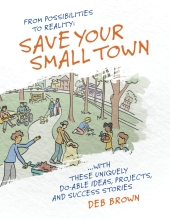J.D. Ray wrote:Is it reasonable to get things distilled down to "yards of cloth per acre of [some fiber crop]"? Say something like "10 square yards of medium-weight flaxen cloth per acre of flax planted".
This is a fantastic question. One I've done a lot of research and experimenting with.
Short answer: it depends.
Long answer: will fill several books.
Somewhere in between answer: If the textile production is well integrated with a sustainable food system (preferably one that includes textiles from the start), then take those official numbers of 'agriculture average farm values' and add about 10 to 20%. In a fully functioning system with an experienced fibre farmer to guide you, it probably won't take any extra land than food production - but it's more likely we are starting with inopportune soils and set up. There is also a learning curve to textile production.
How many yards per acre? Can we calculate it how much space per adult textile needs? This is how most of history looks at cloth production. An adult needs clothing, bedding, towels, and other bits of cloth here and there. So long as the system isn't vegan (if it is vegan, you'll need to change my above number to +50%), then assume at least one main plant and one main animal crop. For my location, that's flax and wool. Let's look at them closer.
Wool. An average sheep can produce between 1 to 2 kilogrammes of finished cloth per year. That's about one
cowichan sweater per sheep, or with a very fine yarn, enough fabric to make up to 10 t-shirts. You can get an idea by weighing clothing you already have to get a better idea. Historically, clothes were much better made than they are now. People had fewer clothes, most people having two outfits (one for work, one for Sunday best). These clothes would last years. Modern day ideas on clothing are very different, so the numbers from sustainable traditional farming practices don't apply well to modern people - but the modern numbers for cloth production don't take into account 'stacking functions'. In the past, the wool from two sheep per person would do nicely.
Another challenge is the land. When I moved here, one sheep per two acres was really pushing it. The land was terrible. But the sheep improved the land and I'm now about to host 5 sheep per acre.
Stacking functions with sheep:
graze them under the fruit trees to reduce pests and diseases in the trees as well as fertilise them.
Other times of the year, graze them on fallow fields after harvest to increase soil fertility.
The rest of the year, they mow the lawn.
they provide meat, milk, wool, soil fertility, and other products.
Flax. This takes dedicated space when it's growing but can be worked into a crop rotation. Traditionally, they suggest 1 hectare per family, but I don't know if that much is necessary and I don't know if that was every year or once every seven years. When we first started growing flax, there was a lot of waste when processing the fibre. The learning curve is steep.
If I was growing flax for my own household needs, I would grow 1/4 acre most years.
Flax also produces mulch/animal bedding. Oil from the seeds (fibre flax seeds are harvested immature, so the germination isn't great, but it is great for oil), livestock fodder from the oilseed cake, food and medicine for people and animals. lots of things.
I don't know if that helps or not. It gives a general idea of what 'it depends' looks like and how we can work some of these things into a food production system.

 2
2




 ) is development of a small, English-style village surrounded by farmland that the community worked to sustain itself. I even designed one that fits in a four-acre square and has a wall around it (as a nod to a possible future that includes roving bands of zombies, but mostly as a way to keep critters out). Even the smallest amount of urban infrastructure can create a place to live that's sustainable for everyone there.
) is development of a small, English-style village surrounded by farmland that the community worked to sustain itself. I even designed one that fits in a four-acre square and has a wall around it (as a nod to a possible future that includes roving bands of zombies, but mostly as a way to keep critters out). Even the smallest amount of urban infrastructure can create a place to live that's sustainable for everyone there.








 1
1























 1
1























 1
1











 1
1











 1
1





















